Publications
Designing for Successful Educational Experiences in Virtual Reality Environments
https://doi.org/10.1177/01626434241277191
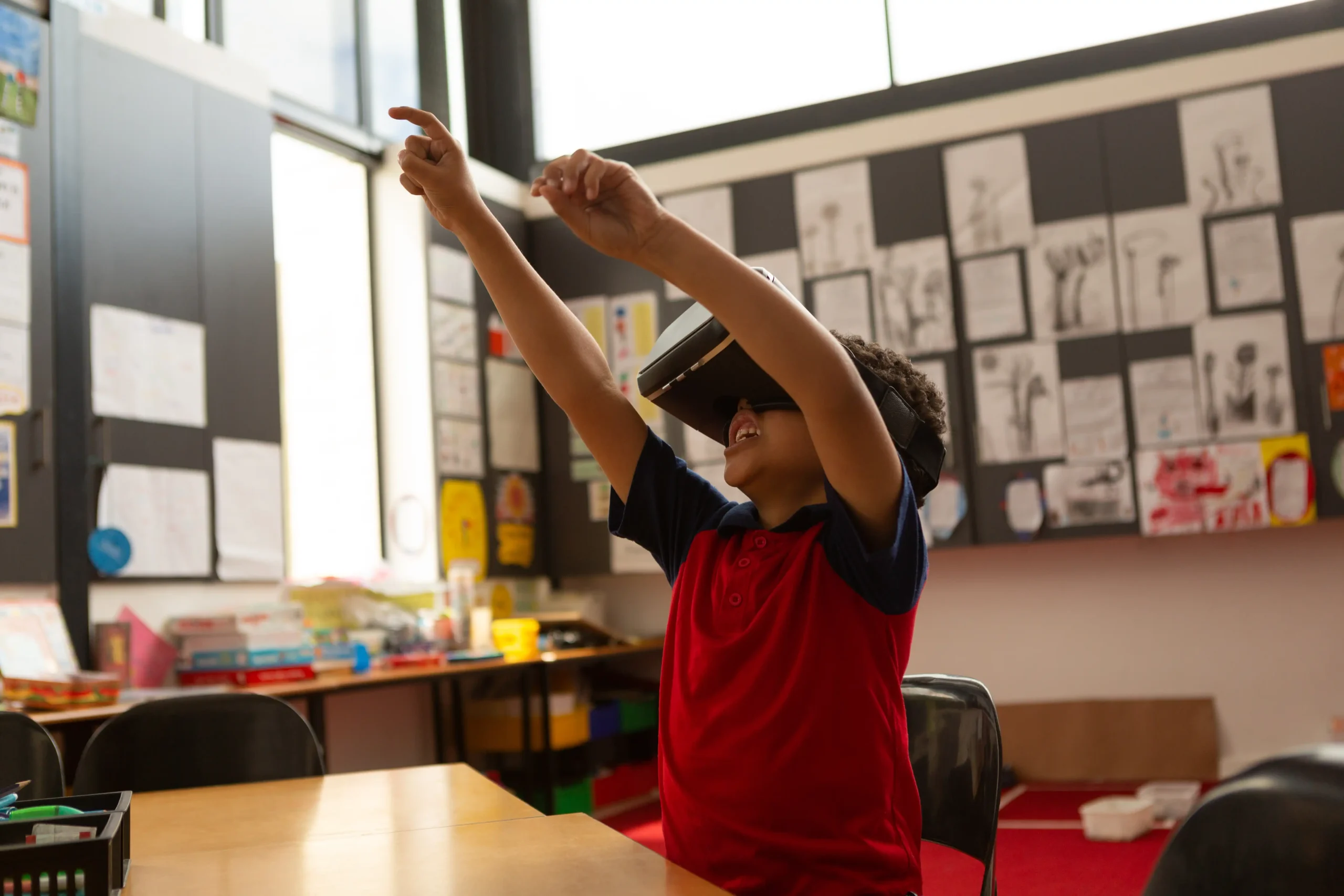
Virtual Reality (VR) and immersive instruction hold great promise to alter instruction for students with autism spectrum disorder (ASD). Yet, the voices of the direct users (e.g., the teachers and students) are often underutilized or not at all utilized in the creation of educational applications, particularly in the field of VR.
The purpose of this study was to understand how teachers and students understand the design elements of future VR educational environments. We conducted interviews with middle school teachers of students with ASD and middle school students with ASD to understand the varying preferences of features and functions as future users of VR in their classrooms. Data analysis revealed three primary themes, engagement, motivation, and navigation, were crucial regarding the design and experience of virtual environments for the participants. Overall, we conclude and discuss that aligning the design of educational technology experience with the perspectives of direct users and aligning with elements of a research-based framework of UDL seems to offer great promise to improving future virtual experiences and student outcomes.
Carreon, A., Rowland, A., Smith, S., Lowery, A., & Mosher, M. (2024). Designing for Successful Educational Experiences in Virtual Reality Environments. Journal of Special Education Technology, 01626434241277191.
The Social Validity of Video Modeling Versus Virtual Reality for Improving the Social Communication Skills of Middle School Students
https://doi.org/10.2458/itlt.5830
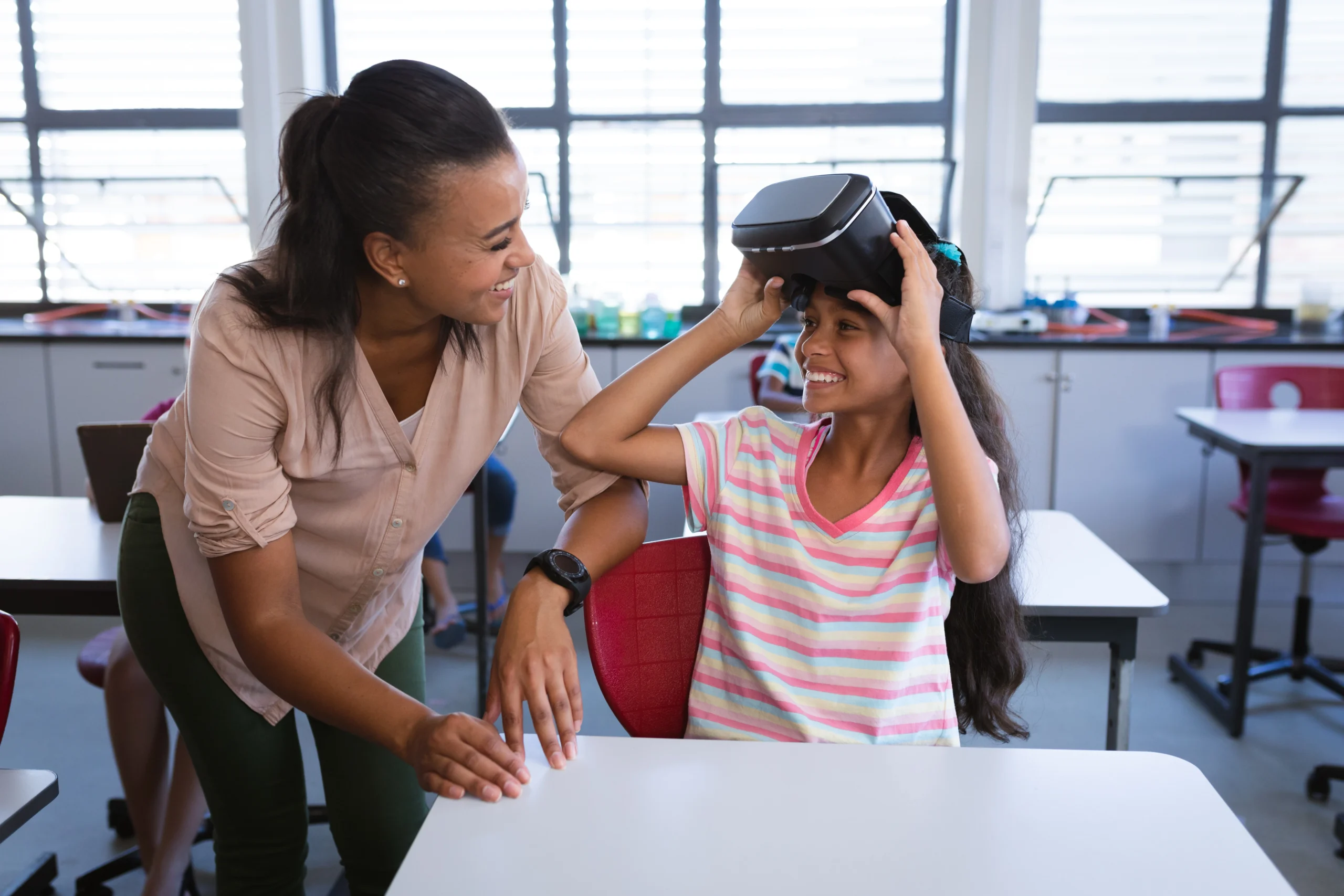
The extent to which an intervention is perceived as socially valid significantly influences whether the intervention is selected, implemented, and maintained (Kern & Manz, 2004). Social-Emotional-Behavioral (SEB) interventions and evidence-based practices (EBPs) are often ranked with low social validity by adolescents (McCoy et al., 2016).
Interventions delivered through virtual reality (VR) report increased social validity with this population due to life-like features improving motivation and engagement (Hew & Cheung, 2010; Mikropoulos& Natsis, 2011). Despite evidence on the positive feelings, there is limited research on the effectiveness of VR-delivered instruction for building SEB competence in students.
Mosher, M. A., Carreon, A. C., Lane, K. L., Sailor, W. S., Smith, S. J., Frey, B. B., … & Bhattashali, A. (2025). The Social Validity of Video Modeling Versus Virtual Reality for Improving the Social Communication Skills of Middle School Students. Issues and Trends in Learning Technologies, 12(2).
The Technology Immersive Presence Scale (TIPS) proof of concept: Creating a student accessible measure of presence in virtual environments.
https://doi.org/10.70725/150951eawulq
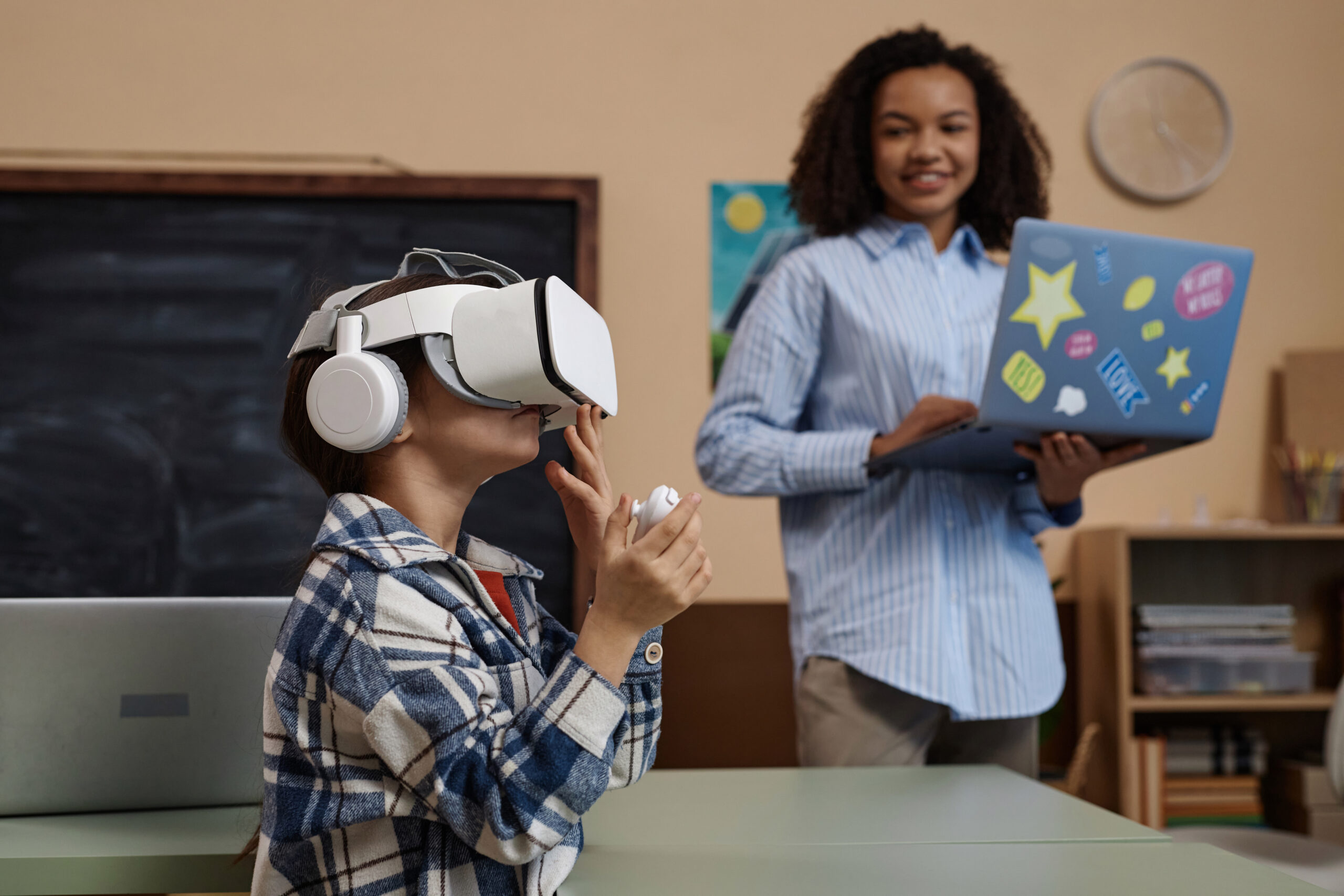
The primary aim of this manuscript is to describe the process of developing a reliable and valid instrument for measuring all users, including students with disabilities, sense of presence in a virtual environment. Presence can be described as feeling a part of another place other than where you are.
A seven-step process is discussed and was utilized to validate item and response formats. Original items were written based on the proposed population and the intended presence construct. Focus groups and experts were conducted to validate the instruments’ ability to address the concept of presence. Further focus groups were utilized to verify language and references were accurate to participants. Finally, a pilot study consisting of 30 participants aged eight and older was conducted to test the instrument for initial reliability. The 30 participants used a device with a virtual environment and then completed the Technology Immersion Presence Scale (TIPS). Initial results indicate the TIPS is a reliable and valid measure of presence for most users with and without disabilities from age 8 to 65. Implications of validating TIPS are discussed.
Mosher, M., Frey, B., Carreon, A., Smith, S., Rowland, A., & Lowrey, A. (2024). The Technology Immersive Presence Scale (TIPS) proof of concept: Creating a student accessible measure of presence in virtual environments. Journal of Interactive Learning Research.
Artificial intelligence techniques and best practices to improve motivation and learning.
https://doi.org/10.1080/15391523.2024.0000000
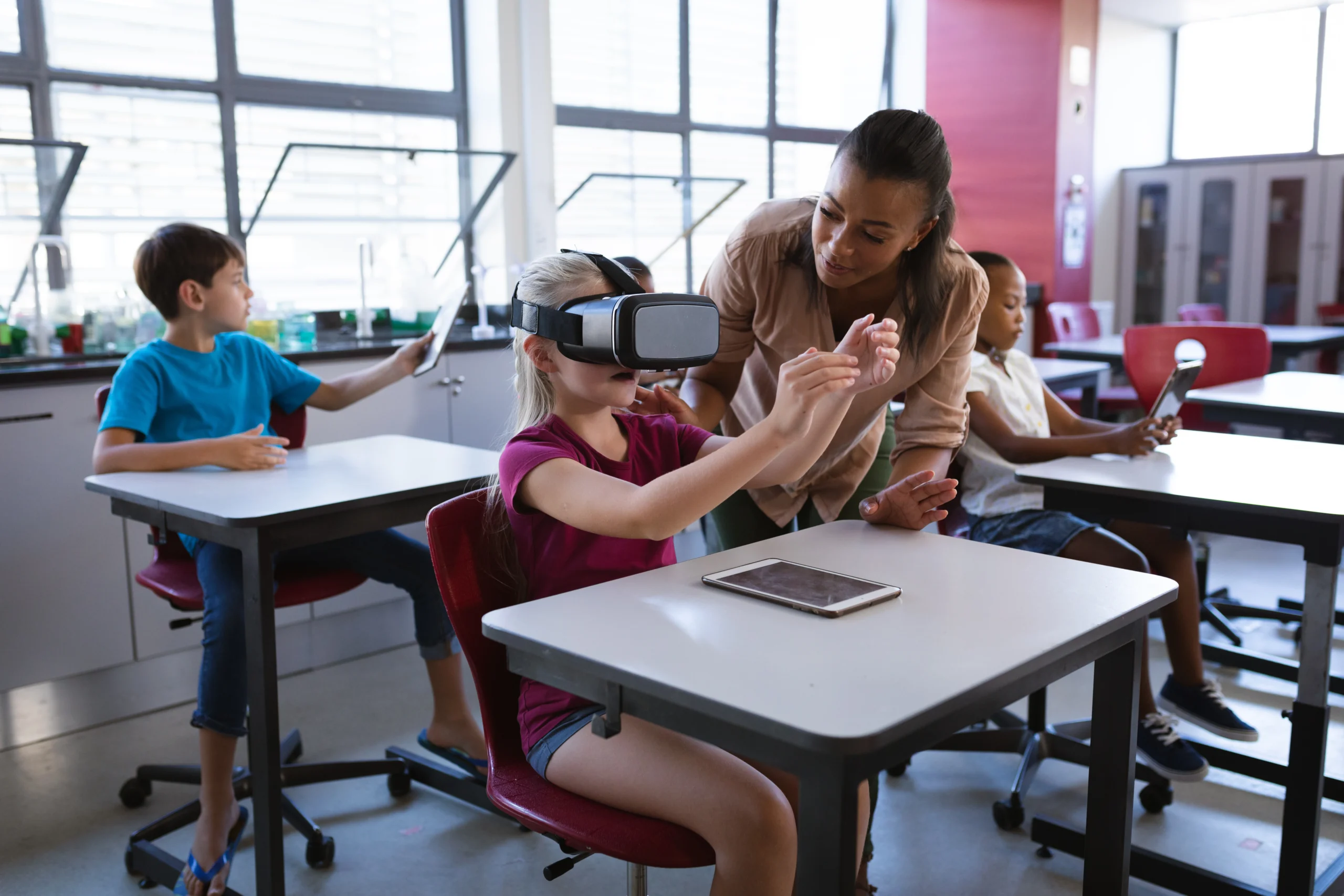
Artificial Intelligence (AI), over the past decade, has improved substantially in its ability to mimic regular conversation and provide more accurate responses (Yin et al., 2021). AI applications, such as ChatGPT, have recently developed the capacity to reject requests that are inappropriate or beyond the application’s reach, challenge incorrect assumptions, and admit mistakes (Makridakis et al., 2023).
Freyer and colleagues’ (2019) even found that college students interacting with Chatbots reported greater curiosity and perseverance than those interacting similarly with peers. Despite these advancements, there are legitimate concerns over the use of AI, especially within education. Responses from AI apps continue to be unnatural, misleading, inaccurate, vague, and biased (Fryer et al., 2019; Sallam et al., 2023). Research shows a decline in the quality of information if educators become over-reliant on AI (Chiu et al., 2023a). Still, the capacity for AI to assist educators and motivate students has been displayed (Chen et al., 2020; Laupichler et al., 2022; Ng et al., 2023a, 2023b; Salas-Pilco et al., 2022; Sanusi et al., 2022; Su et al., 2022; Tan et al., 2022; Wangenheim et al., 2021).
This presentation discusses a mixed methods study on a randomized control trial evaluating AI safeguards. Possible solutions from this study include: (a) providing engineered detailed prompts within AI, (b) pulling data from a knowledgeable database by trusted experts, (c) providing specific questions within the prompt of response type warranted, (d) creating a clear pedagogical focus, and (e) using AI as one source within many sources to gather outside perspectives rather than replace human data collection. It will also discuss prompting questions to improve AI accuracy, such as: “Was the data the AI was trained on representative of the population affected by subsequent decisions?” and “Is the information given well-balanced and derived from an analysis of information from trustworthy sources?
Mosher, M. A., Rowland, A. L., Frey, B. B., Smith, S. J., Sulaimon, T. L., & Carreon, A.C. (2024). Artificial intelligence techniques and best practices to improve motivation and learning. Journal of Research on Technology in Education. Advance online publication.
IITSEC Artificial Intelligence Techniques and Best Practices to Improve Motivation and Learning.
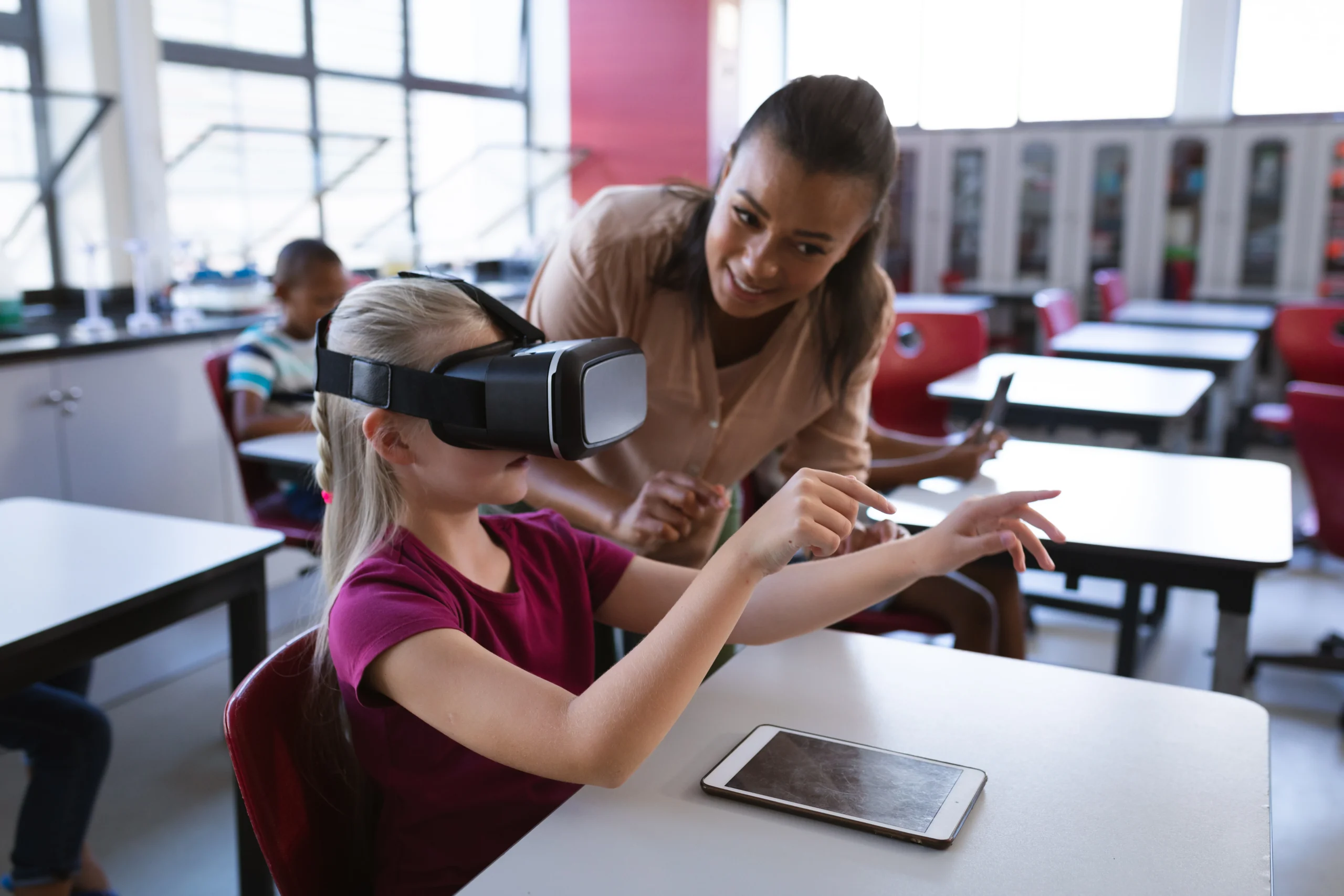
Artificial Intelligence (AI), over the past decade, has improved substantially in its ability to mimic regular conversation and provide more accurate responses (Yin et al., 2021). AI applications, such as ChatGPT, have recently developed the capacity to reject requests that are inappropriate or beyond the application’s reach, challenge incorrect assumptions, and admit mistakes (Makridakis et al., 2023).
Freyer and colleagues’ (2019) even found that college students interacting with Chatbots reported greater curiosity and perseverance than those interacting similarly with peers. Despite these advancements, there are legitimate concerns over the use of AI, especially within education. Responses from AI apps continue to be unnatural, misleading, inaccurate, vague, and biased (Fryer et al., 2019; Sallam et al., 2023). Research shows a decline in the quality of information if educators become over-reliant on AI (Chiu et al., 2023a). Still, the capacity for AI to assist educators and motivate students has been displayed (Chen et al., 2020; Laupichler et al., 2022; Ng et al., 2023a, 2023b; Salas-Pilco et al., 2022; Sanusi et al., 2022; Su et al., 2022; Tan et al., 2022; Wangenheim et al., 2021).
This presentation discusses a mixed methods study on a randomized control trial evaluating AI safeguards. Possible solutions from this study include: (a) providing engineered detailed prompts within AI, (b) pulling data from a knowledgeable database by trusted experts, (c) providing specific questions within the prompt of response type warranted, (d) creating a clear pedagogical focus, and (e) using AI as one source within many sources to gather outside perspectives rather than replace human data collection. It will also discuss prompting questions to improve AI accuracy, such as: “Was the data the AI was trained on representative of the population affected by subsequent decisions?” and “Is the information given well-balanced and derived from an analysis of information from trustworthy sources?”
Mosher, M., Rowland, A., Carreon, A., Sulaimon, T., Smith, S., & Frey, B. (2024). Artificial intelligence techniques and best practices to improve motivation and learning. Interservice/Industry Training, Simulation, and Education Conference, 1-12.
A Guide for Special Education Leaders to Utilize Artificial Intelligence: Students’ Perspectives for Future Consideration
https://files.eric.ed.gov/fulltext/EJ1441807.pdf
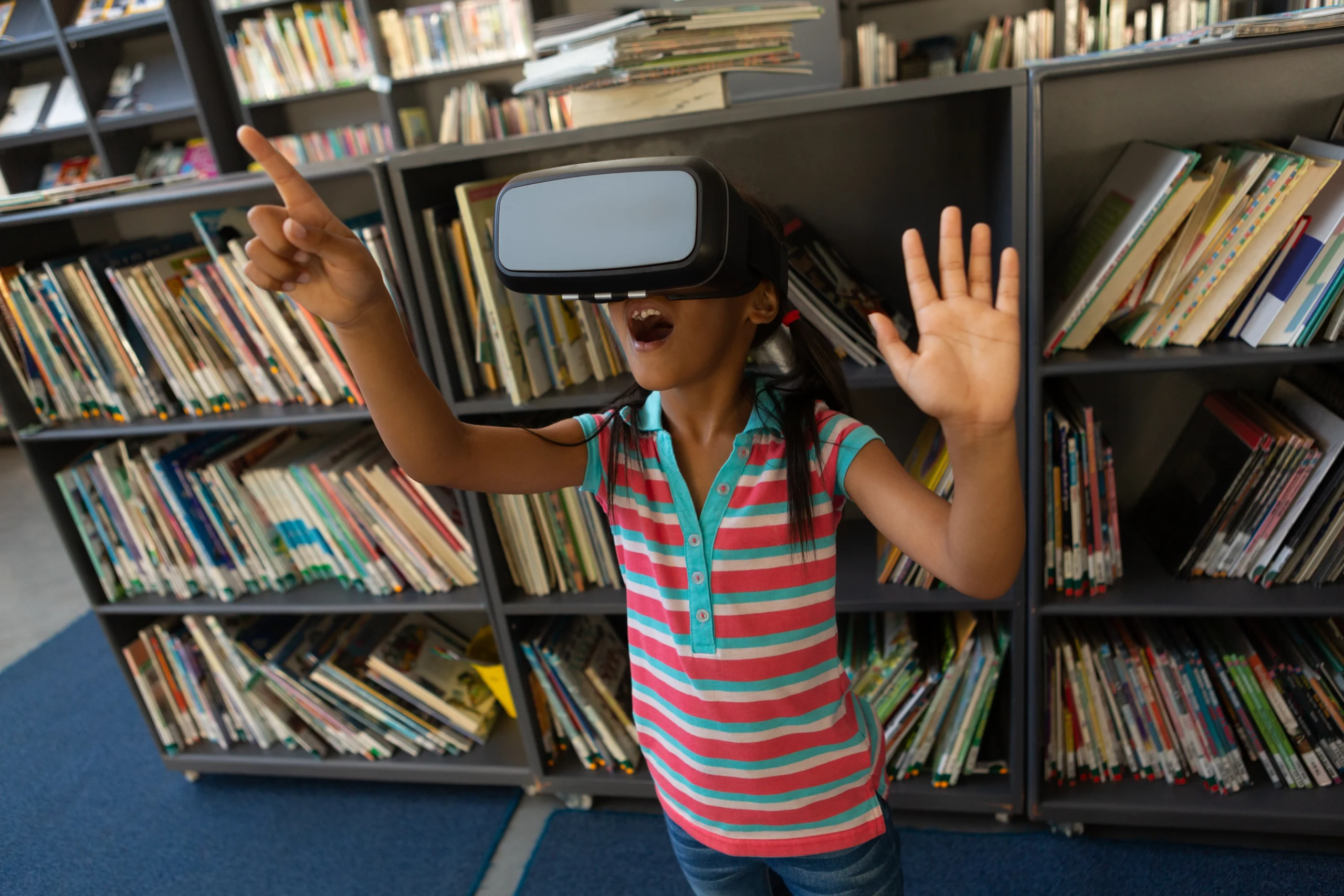
The purpose of this qualitative study was to understand, from the perspective of students with disabilities, what special education leaders and their respective classroom educators should consider in the integration of artificial intelligence (AI) features and tools to support individualized instruction. This study utilized an immersive and interactive personalized learning environment, virtual reality, to engage students with disabilities as they consider AI tools, features, and supports that are currently needed to enhance their learning experience.
The five primary themes for AI integration that building and instructional special education leaders should consider included: (1) response options; (2) content; (3) learning environment and virtual characters; (4) visuals; and (5) sound or auditory supports. As special education leaders seek to determine how best to navigate growing AI tools and how and when to implement, this study, coming from the voice of students with disabilities, offers some immediate and pertinent suggestions within the context of current personalized learning efforts.
Smith, S. J., Rowland, A., Goldman, S., & Carreon, A. (2024). A Guide for Special Education Leaders to Utilize Artificial Intelligence: Students’ Perspectives for Future Consideration. Journal of Special Education Leadership, 37(2), 77-92.
Classroom Virtual Reality for Students with Disabilities: A Preliminary Guide to Available Virtual Content
https://doi.org/10.1177/01626434231170593
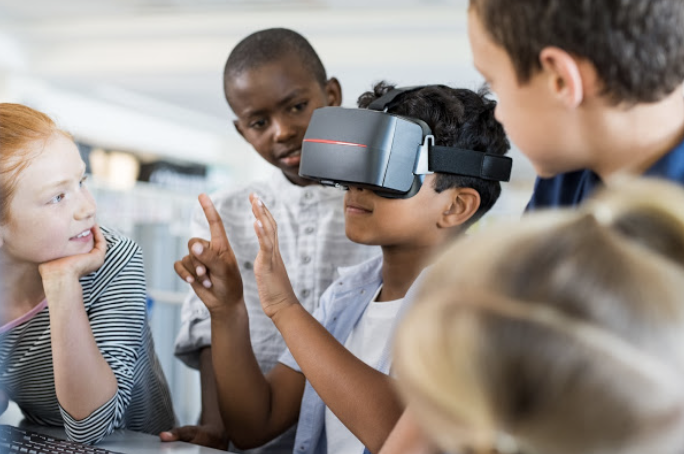
Virtual reality (VR) is an innovative technology that is rapidly gaining popularity in and out of the classroom. With improvements in hardware and software technology and the push for one-to-one computing, teachers can more easily utilize innovative VR supports and resources.
These innovative technologies have the potential to improve instruction for all learners in today’s classroom, particularly students with identified disabilities. VR, as an interactive and visual tool, provides teachers with ways to support and enhance traditional classroom materials for students, particularly those with disabilities. However, teacher time is often compromised and finding new technology can be daunting. This article intends to assist educators in utilizing VR in the classroom, with minimal effort and money. Using a detailed vignette, we guide the reader through a detailed example of how VR apps can be located and implemented for students with disabilities who struggle with motivation and engagement through experiential learning. Finally, we offer additional apps and their delivery devices as a starting point for teachers to begin creating more immersive and interactive content through VR technology.
Carreon, A., Criss, C., & Mosher, M. (2023). Classroom Virtual Reality for Students With Disabilities: A Preliminary Guide to Available Virtual Content. Journal of Special Education Technology, 0(0).
Comparing immersive VR and non-immersive VR on social skill acquisition for students in middle school with ASD
https://doi.org/10.1080/15391523.2023.2182851

Virtual reality (VR) has evolved to include non-immersive to fully-immersive experiences for the classroom. This study seeks to understand the potential effects VR may offer, specifically characteristics associated with how a student experiences a VR intervention and the effects of using a VR device for learning.
A group experimental design was used to compare a fully-immersive VR intervention and an identical non-immersive VR intervention for a group of middle school participants with ASD (N = 22). Participants were randomly assigned a screen-based VR experience or a head-mounted display VR experience through rolling randomization. Results indicate that while the more immersive condition did not produce higher acquisition than the non-immersive condition, both device conditions did produce significant increases in learning.
Carreon, A., Smith, S.J., Frey, B., Rowland, A. & Mosher, M. (2023) Comparing immersive VR and non-immersive VR on social skill acquisition for students in middle school with ASD. Journal of Research on Technology in Education
The Social Validity and Efficacy of a Virtual Reality Intervention for Improving Middle School Students’ Social Communication: A Randomized Controlled Study
https://www.proquest.com/docview/2825314875

The extent to which an intervention is perceived as socially valid significantly influences whether the intervention is selected, implemented, and maintained (Kern & Manz, 2004). Social skill interventions and evidence-based practices are often ranked with low social validity by adolescents (McCoy et al., 2016). Interventions delivered through virtual reality (VR) report increased social validity with this population due to life-like features improving motivation and engagement (Hew & Cheung, 2010; Mikropoulos & Natsis, 2011).
Despite evidence of positive feelings, there is limited research on the effectiveness of VR-delivered instruction for building social competence in students. This study utilized a randomized control trial (RCT) to investigate whether a VR-based social skill intervention, Virtual reality Opportunities to Integrate Social Skills (VOISS), could be as effective as an evidence-based intervention, the Program for the Education and Enrichment of Relational Skills (PEERS) at improving the expressive communication knowledge and skill application of middle school students. The study also sought to understand student social validity ratings (i.e., acceptability, appropriateness, and feasibility) of the VR intervention (VOISS) versus the PEERS intervention. Participants within ten classrooms in four states were randomly assigned to VOISS (N=60) and PEERS (N=60). In both conditions, participants experienced an estimated 300 minutes of the interventionspread out over one to four months. Using the norm-referenced Clinical Evaluation of Language Fundamentals-5 Pragmatic Profile (CELF-5 PP) and a knowledge-based assessment, participants were assessed pre and post-intervention to determine social communication skill acquisition and application. All participants were also given an adapted Children’s Intervention Rating Profile (CIRP), the Intervention Appropriateness Measure (IAM), and the Feasibility of Intervention Measure (FIM) to determine their ratings of each intervention’s acceptability, feasibility, and appropriateness. Results indicate that a VR intervention (VOISS) has the potential to provide an effective and socially valid means of delivering social communication instruction to middle school students.
Mosher, M. A. (2023). The Social Validity and Efficacy of a Virtual Reality Intervention for Improving Middle School Students’ Social Communication: A Randomized Controlled Study (Doctoral dissertation, University of Kansas).
A Review of Virtual Reality Intervention Research for Students with Disabilities in K-12 Settings
http://doi.org/10.1177/0162643420962011

Virtual reality (VR) technology has improved in availability in the area of K–12 instruction, increasingly being cited for its promise to meet the varied learning needs of individuals with disabilities.
This descriptive review of 25 research studies conducted in K–12 settings examined the defining characteristics of immersion levels associated with VR, the purpose and application of the augmented reality intervention, the outcomes associated with the current use of VR, and the possibility of generalization beyond VR. The results of the review reveal that a majority of studies are utilizing nonimmersive screen-based simulations. While still considered under the VR domain, these technologies do not take advantage of the features of semi- and fully immersive VR which make it an appealing intervention for students with disabilities. Based on the results of this review, we provide recommendations to establish a strong research base on emerging VR technology and its use for students with disabilities in the K–12 classroom.
Carreon, A., Smith, S.J., Mosher, M., Rao, K. & Rowland, A. (2022). A Review of Virtual Reality Intervention Research for Students with Disabilities in K-12 Settings. Journal of Special Education and Technology. 37(1). 82-99.
Technology Tools Available for Implementing Social Skill Instruction
https://doi.org/10.1177/00400599211041738

General and special education teachers report feeling inadequate in providing social skill instruction to students. Yet, researchers and government bodies (ASELA, 2015) report students receiving social skill instruction display marked improvements in: (a) motivation to learn, (b) commitment to school, (c) time devoted to schoolwork, (d) mastery of subject matter, (e) school attendance, (f) graduation rates, (g) grades, and (h) test scores. Numerous technology tools are available to assist educators in providing social skill instruction to students with disabilities. However, determining a student’s social skill need and finding tools that utilize effective research-based interventions can be a time-consuming and daunting task for educators.
In this article, the authors provide a streamlined process for determining an individual student’s social skill instructional need and present technology tools available that utilize high-leverage and evidence-based practices (EBPs) to provide instruction for these targeted areas.
Mosher, M. A. (2022). Technology Tools Available for Implementing Social Skill Instruction. TEACHING Exceptional Children, 55(1), 60–71.
Immersive Technology to Teach Social Skills to Students with Autism Spectrum Disorder: a Literature Review
https://doi.org/10.1007/s40489-021-00259-6
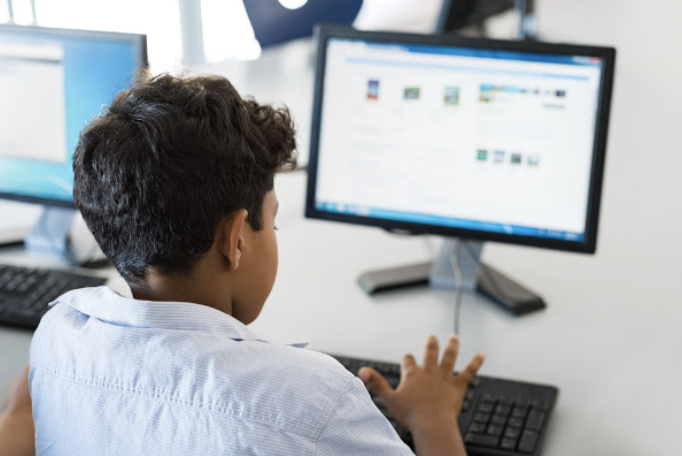
This study presents the findings of a systematic review of empirical research on the use of augmented reality (AR), virtual reality (VR), mixed reality (MR), and extended reality (XR) to present social skill instruction to school-age students with autism spectrum disorder (ASD).
Forty-one articles met the criteria to be reviewed. Studies targeted relationship skills, emotion recognition, social awareness, cooperation, and executive functioning. The intervention caused statistical improvement in 15 of the 41 studies (37%). Practitioners, parents, and researchers reported significant improvement of social skills in 32 studies (83%). We suggest modifications to the technology and interventions within the technology which may increase statistical gains for students. We conclude with recommendations for researchers and practitioners implementing AR and VR delivered social skill interventions.
Mosher, M.A., Carreon, A.C., Craig, S.L. et al. Immersive Technology to Teach Social Skills to Students with Autism Spectrum Disorder: a Literature Review. Rev J Autism Dev Disord 9, 334–350 (2022).
A Comparison of Immersive VR and Non-Immersive VR on Social Skill Acquisition for Students in Middle School with ASD
https://www.proquest.com/docview/2585290993

Virtual reality (VR) is rapidly becoming a popular tool for use in the classroom. VR technology has been available for years, but education stakeholders struggled with adoption due to the high costs and complexity. As VR technology has evolved, a broad spectrum of VR has been developed for use including non-immersive to fully-immersive VR. While previous research show potential in VR for student learning, a direct understanding of specific types of VR is lacking. This study seeks to understand the potential effects VR may offer, specifically characteristics associated with how a student experiences a VR intervention and the effects of using a VR device for learning.
To investigate the effects of VR, a group experimental design was used to compare a fully-immersive VR intervention and an identical non-immersive VR intervention for a group of middle school participants with autism spectrum disorder (N=22). Participants were randomly assigned a condition, half (N=11) of the participants were randomly assigned to a screen-based non-immersive intervention condition, and the other half (N=11) were randomly assigned to the headset immersive intervention condition. In both conditions, participants experienced five social skill scenarios a day, for five days, in the same linear order. Using the norm-referenced Clinical Assessment of Pragmatics, participants were assessed prior to and directly following intervention to measure learning. Results indicate that while the more immersive condition did not produce higher acquisition than the non-immersive condition, both device conditions did produce significant increases in learning. Additionally, participants reported an almost identical level of presence, meaning that regardless of device condition, students perceived them to be similar.
Carreon, A. (2021). A Comparison of Immersive VR and Non-Immersive VR on Social Skill Acquisition for Students in Middle School with ASD (Doctoral dissertation, University of Kansas).
Teaching social skills to students with autism spectrum disorder through augmented, virtual and mixed reality
https://doi.org/10.25304/rlt.v29.2626
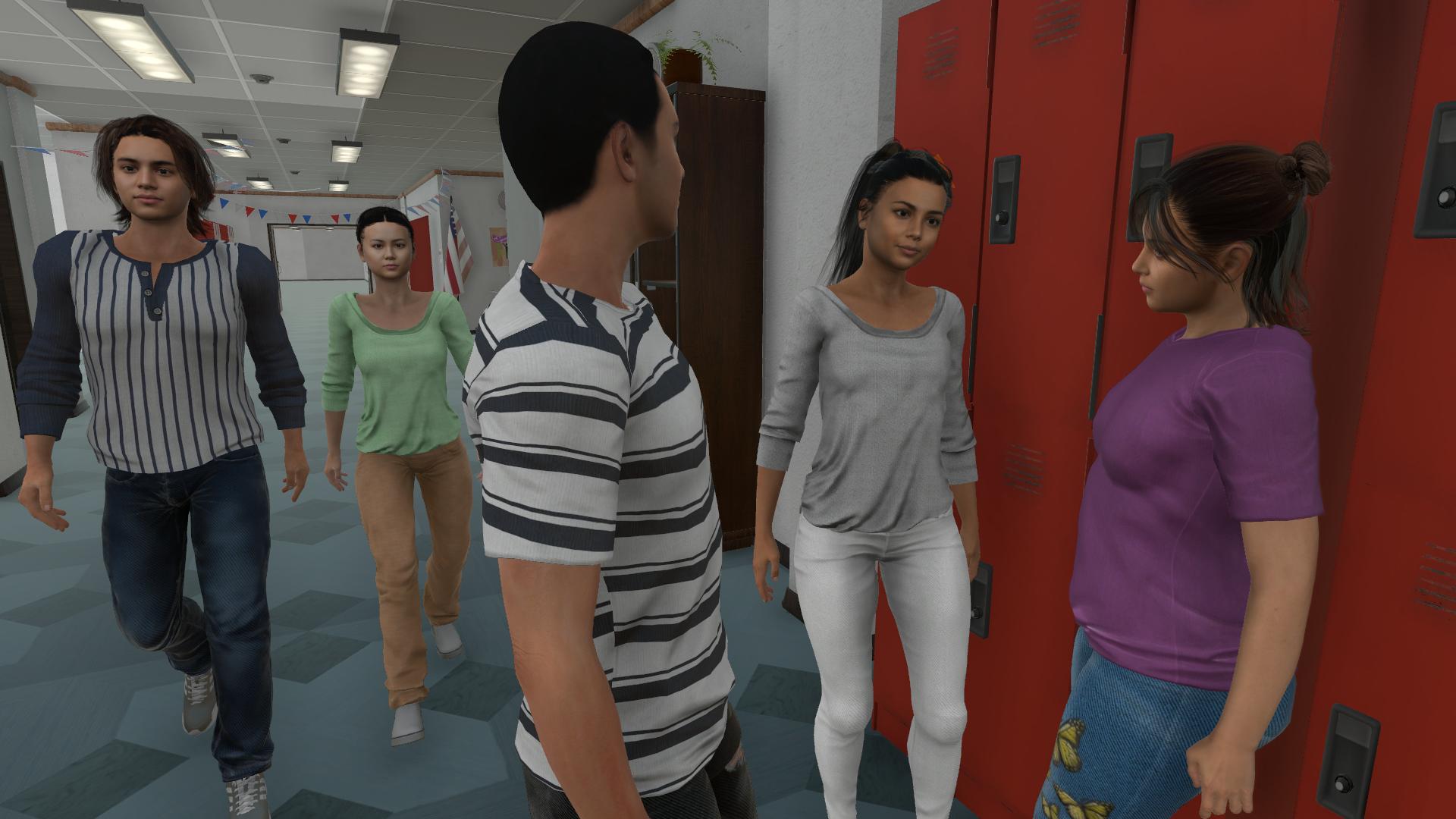
This systematic literature review was conducted to explore the social validity of augmented reality (AR), virtual reality (VR), and mixed reality (MR) as a means of providing social skill instruction to students with autism spectrum disorder (ASD).
Forty-one articles met the criteria to be reviewed, including five studies utilizing AR and the remaining 36 utilizing VR for social skill interventions. No studies implemented MR. The targeted skills of the studies included emotion recognition, relationship skills, social awareness, cooperation, and executive functioning. The intervention was considered effective in 63% of studies, not effective in 10% of studies, and mixed results in 27% of studies. The social validity indicators reported by researchers ranged from two to 14 of 17 determined categories. Findings indicate the primary socially valid reasons for utilizing AR/VR for social skill instruction were high student motivation toward the intervention and a positive attitude toward the technology. Findings indicate that increasing the role of parents, educators, and students as both social skill selectors and treatment agents and adding valid and reliable skill measures may improve the effects of an intervention. Sustainability may increase by providing training to both treatment agents and participants. AR has the potential to improve generalization and VR provides a practice environment for performance deficits. Combining these technologies may provide a more effective social skill intervention.
Mosher M. A., & Carreon A. C. (2021). Teaching social skills to students with autism spectrum disorder through augmented, virtual and mixed reality. Research in Learning Technology, 29.
